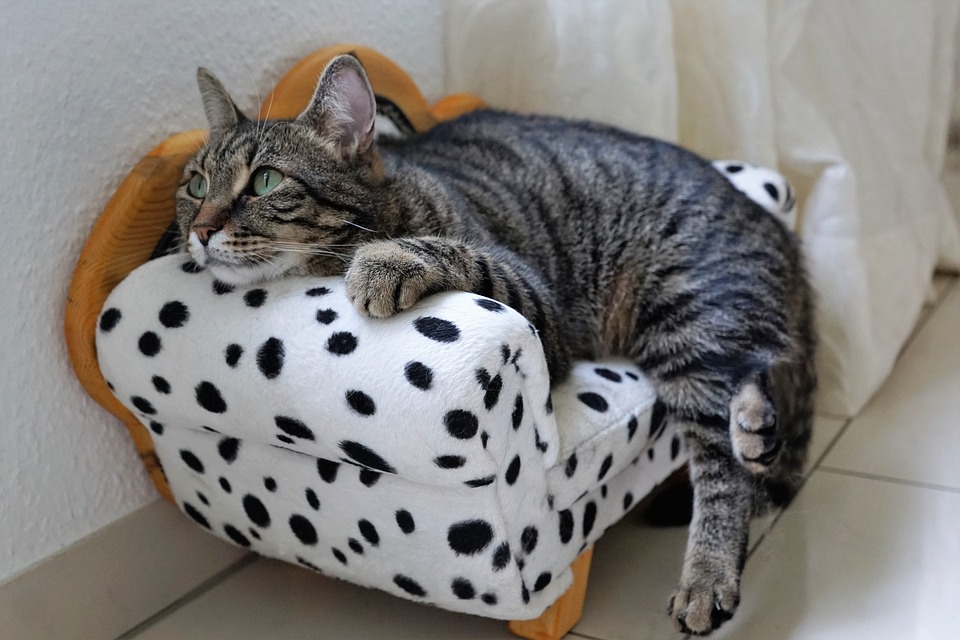Keeping indoor cats mentally stimulated and engaged is crucial for their overall well-being. Environmental enrichment plays a vital role in providing cats with the mental stimulation they need to prevent boredom, stress, and other behavioral issues. In this article, we will explore various ways to provide mental enrichment for indoor cats through environmental enrichment techniques.
Understanding the Importance of Mental Enrichment for Indoor Cats
Mental enrichment is essential for indoor cats as it helps prevent boredom and provides them with the necessary mental stimulation they would typically get from outdoor exploration. Cats are natural hunters and explorers, and without mental stimulation, they can become bored and develop behavioral problems such as aggression or excessive grooming.
Creating a Stimulating Indoor Environment
To provide mental enrichment for indoor cats, it is essential to create a stimulating indoor environment. This can be achieved by providing vertical space for climbing and exploring, offering hiding spots and cozy resting areas, utilizing window perches for visual stimulation, and incorporating scratching posts and toys for play. By giving cats a variety of options to explore and engage with their environment, they can fulfill their natural instincts and stay mentally stimulated.
Interactive Toys and Puzzles
Interactive toys and puzzles are excellent tools for mental enrichment. They not only keep cats entertained but also provide them with a challenge that engages their minds. There are various types of interactive toys available, such as treat-dispensing toys and puzzle feeders. These toys encourage cats to use their problem-solving skills to obtain their reward. Additionally, DIY puzzle ideas, such as hiding treats in paper towel rolls or creating a homemade puzzle feeder, can provide mental stimulation for cats.
Engaging in Playtime with Your Indoor Cat
Interactive play sessions with your cat are essential for their mental enrichment. Playing with your cat helps strengthen the bond between you and provides them with physical exercise and mental stimulation. The best toys for interactive play include wand toys, feather toys, and laser pointers. It is essential to rotate and introduce new toys regularly to keep your cat engaged. Tips for engaging your cat in play include mimicking prey-like movements, allowing them to “catch” the toy, and praising and rewarding them for their participation.
Incorporating Food Enrichment
Food enrichment is another effective way to provide mental stimulation for indoor cats. Puzzle feeders can be used during mealtime to make it more interactive. These feeders require cats to work for their food, simulating their natural hunting behavior. Slow feeders can also be used to prevent cats from eating too quickly, providing mental stimulation and promoting slower, healthier eating habits. DIY food enrichment ideas include hiding treats around the house or using food-dispensing toys.
Providing Mental Stimulation through Training
Training your indoor cat can provide mental stimulation and strengthen the bond between you and your pet. The advantages of training include mental exercise, increased confidence, and better communication between you and your cat. Basic obedience commands, such as sit, stay, and come, can be taught using positive reinforcement techniques. For more advanced mental stimulation, tricks such as high-five or rolling over can be taught. Training sessions should be short, fun, and rewarding for your cat.
FAQs (Frequently Asked Questions)
1. Can environmental enrichment help reduce destructive behavior in indoor cats?
Yes, providing environmental enrichment can help redirect your cat’s energy and prevent them from engaging in destructive behavior out of boredom or frustration.
2. How often should I rotate my cat’s toys and enrichment items?
It is recommended to rotate your cat’s toys and enrichment items every few days to keep them interested and prevent them from becoming bored.
3. Are there any specific toys or puzzles that are recommended for senior cats?
Senior cats may benefit from toys that are easier to manipulate, such as puzzle feeders with larger openings or toys with softer textures. It is important to consider their physical limitations and preferences when selecting toys for them.
4. Can environmental enrichment help alleviate stress and anxiety in cats?
Yes, mental enrichment can help alleviate stress and anxiety in cats by providing them with positive outlets for their energy and redirecting their focus to more stimulating and engaging activities.
5. What are some signs that my indoor cat is not mentally stimulated?
Signs that your indoor cat may not be mentally stimulated include excessive grooming, aggression, lethargy, or destructive behavior. These behaviors can indicate boredom or frustration and the need for increased mental enrichment activities.
Conclusion
Providing mental enrichment for indoor cats is essential for their overall well-being. By creating a stimulating indoor environment, incorporating interactive toys and puzzles, engaging in playtime, incorporating food enrichment, and providing training opportunities, you can ensure that your indoor cat leads a happy, healthy, and fulfilling life. Remember to assess your cat’s preferences and needs to tailor the enrichment activities accordingly. With a well-enriched environment, your indoor cat will thrive both mentally and physically.








